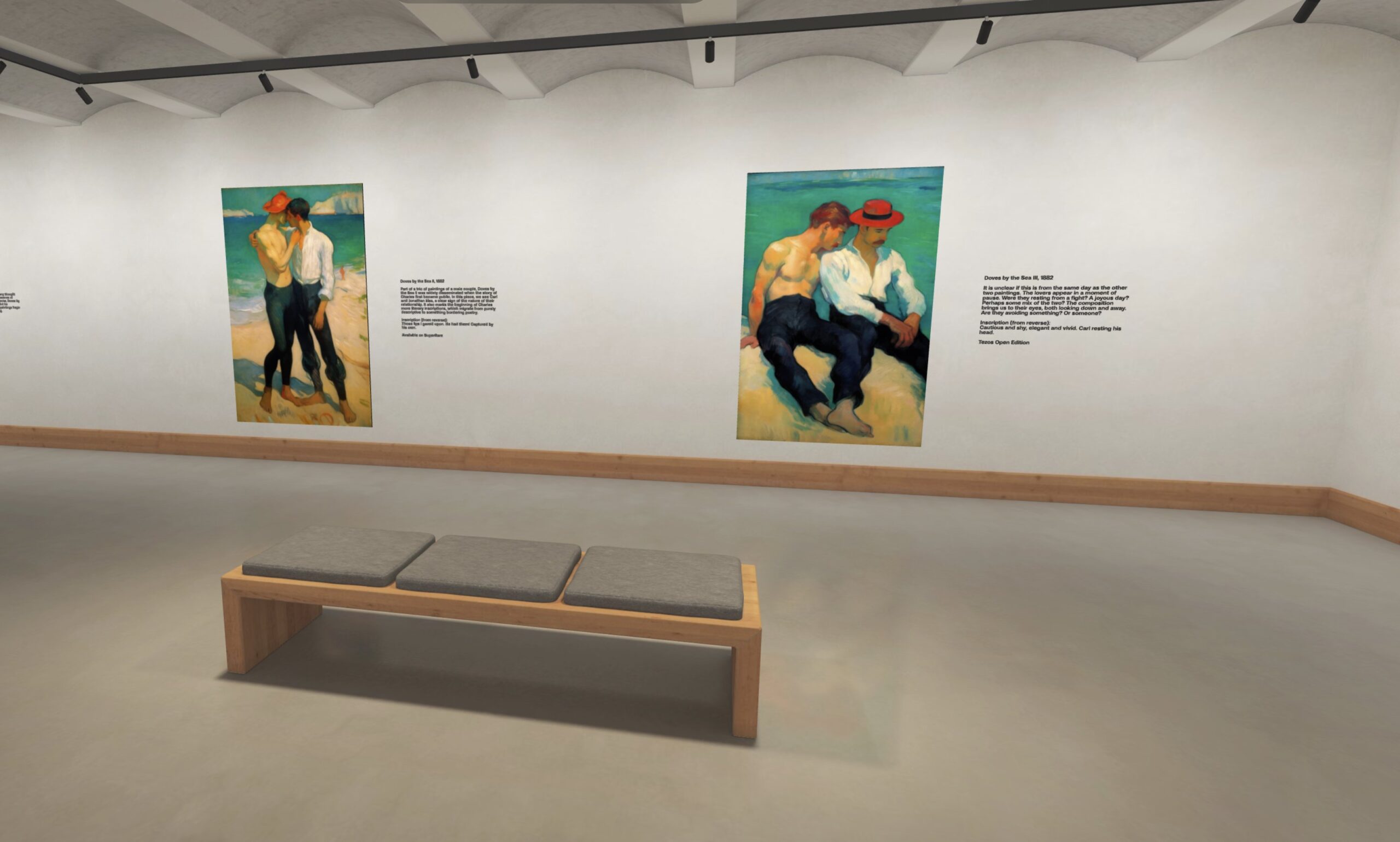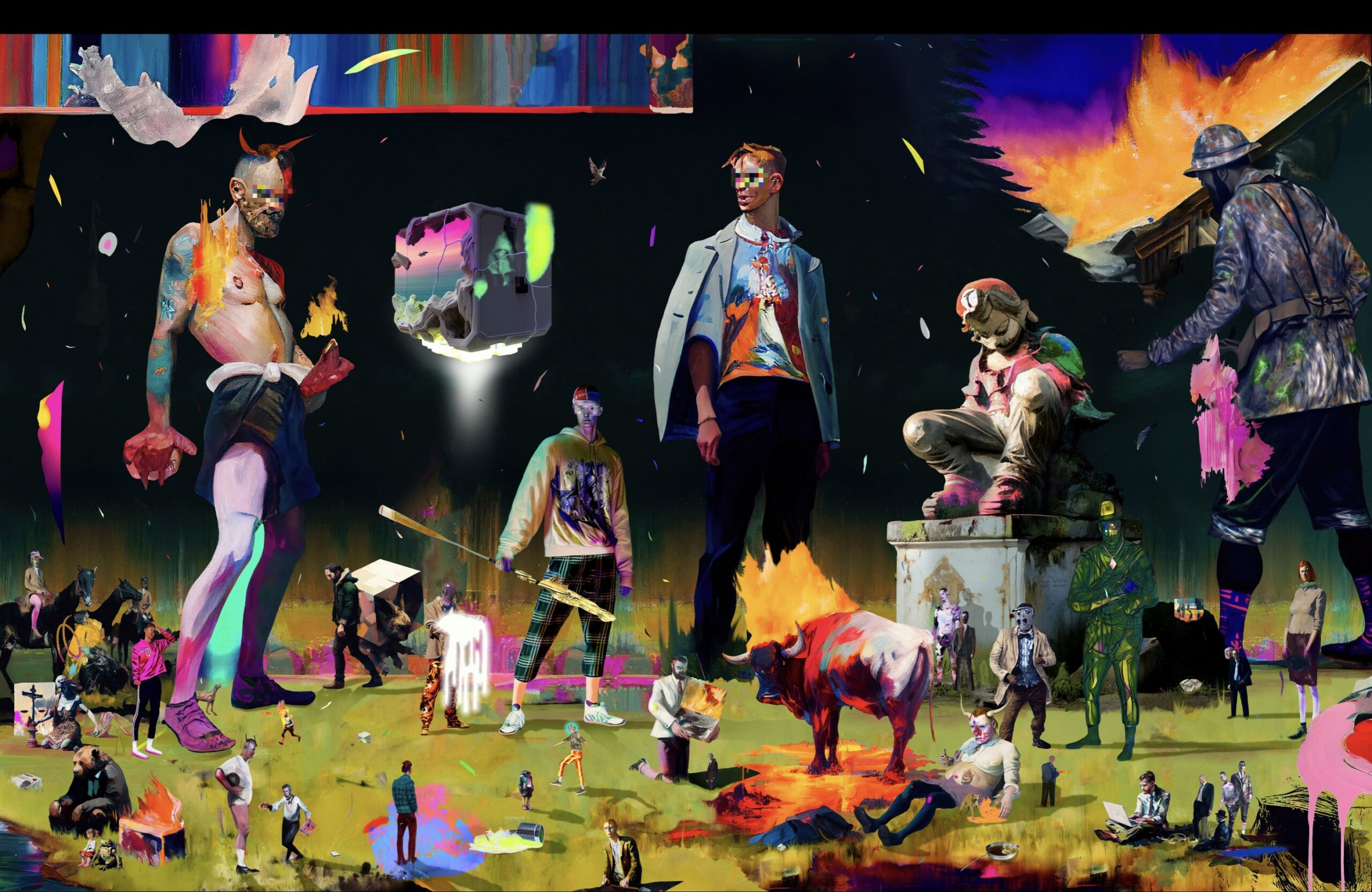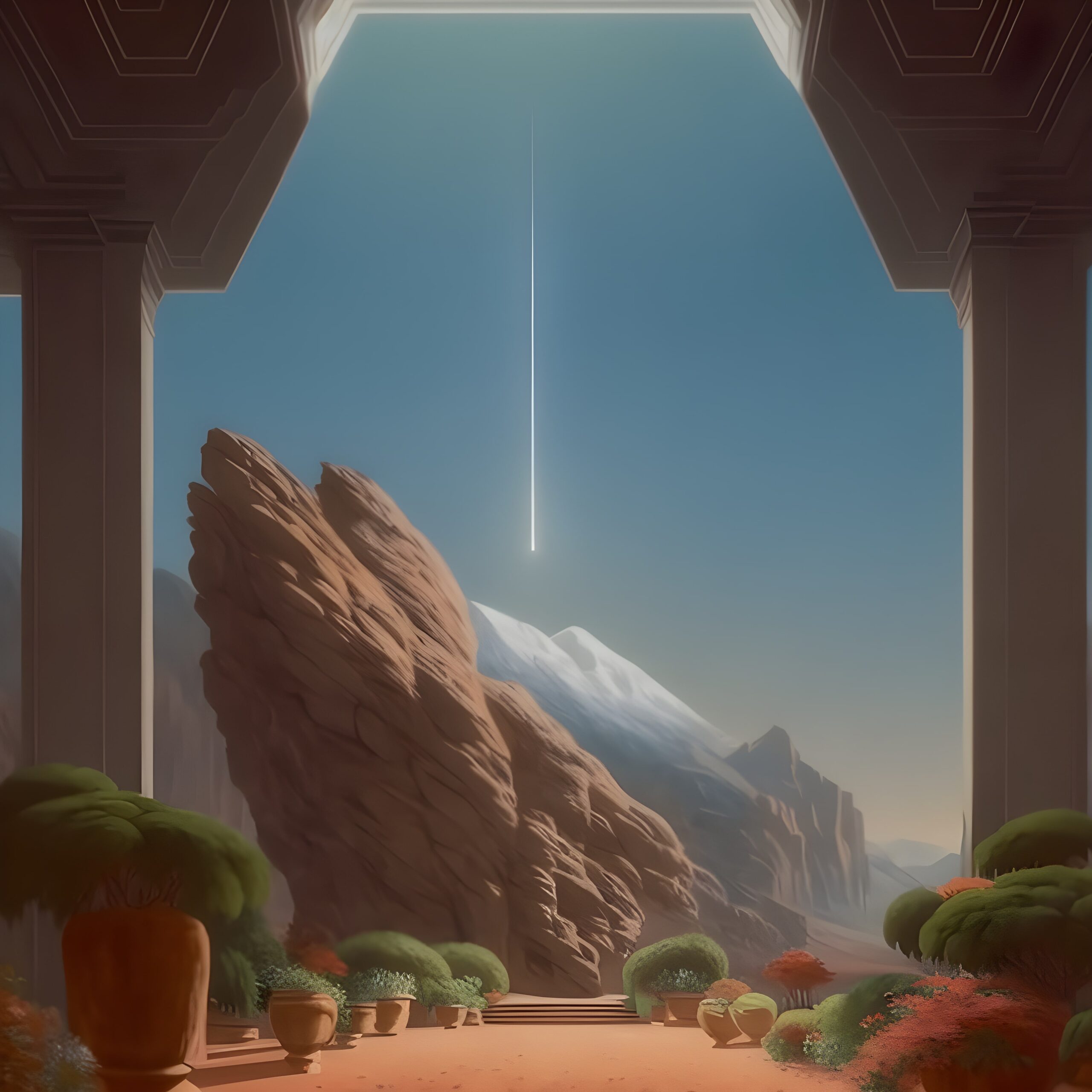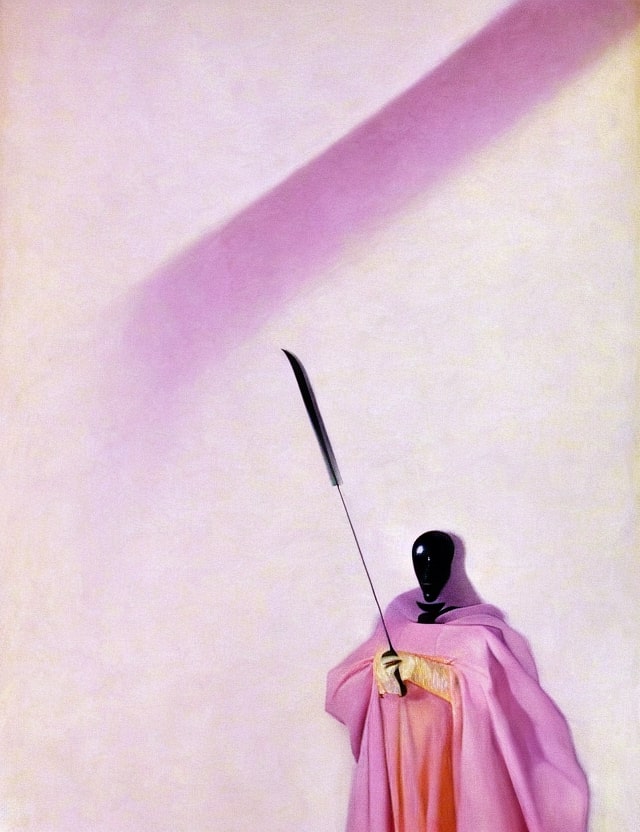Felix Xu
The crypto CEO and Tezos enthusiast shares highlights from his collection of over four thousand NFTs.

A serial entrepreneur and investor, Chris Ostoich is now chief operating officer of Transient Labs, a platform that builds tools for web3 creators. He’s also a passionate collector of NFTs, with thousands of works collected across platforms and blockchains, and a particularly strong focus on projects that use artificial intelligence. But amid all the hype (and confusion) around this rapidly developing technology, how do you maintain quality control? Does it matter whether the artist has trained their own model? Or can cleverly prompted images generated by Dall-E and Midjourney be just as valuable, in their own way? Ostoich spoke to Outland about his instinct-driven approach to evaluating AI-generated work, giving examples of some of his favorite acquisitions and artists. Among these is the collector-turned-creator ClownVamp, who has partnered with Ostoich and Transient Labs to create “Chester Charles: The Lost Grand Master,” a series of AI-generated pieces attributed to a fictional gay artist from the nineteenth century. An exhibition of those works was recently presented at the Canvas 3.0 Gallery at the Oculus, World Trade Center.

I was always fascinated by the opportunity that blockchain technology presented. I put a little bit of money I shouldn’t have into crypto in 2017, then it vanished into thin air. I told myself crypto was a scam and walked away. Then, in 2020, all anybody wanted to talk about was 10k PFPs and cartoon NFTs. Again, I was not so excited. I felt like blockchain presented the opportunity of a transformative moment in history, but this wasn’t the right use case. So I became very passionate about developing better NFT strategies for people. I was part of a venture studio with some high-profile collectors, and quickly saw an opportunity to build a platform to help onboard new collectors. That led me to build Transient Labs with founders Marco Peyfuss and Ben Strauss.

My eyes were opened to what was out there. I saw this amazing collision of art and culture and technology. Of course, it was the most frothy, crazy environment on earth. Without a big bag of ETH sitting around I didn’t have a way to participate in that world. So, initially I started collecting on Tezos. At first, it was a cost thing, but I quickly realized there was truly incredible digital art being created here. While I was a bit late to Hic et Nunc, I was one of the first people minting on fxhash, and I have a deep affinity for that platform. I think being part of the very early audience for something always binds you to that thing. In total, I would say I now have close to 10,000 pieces in my collection across Tezos and Ethereum wallets. There are 4,500 pieces from fxhash alone.
I’m not financializing my collection in any way at this point. Ten years from now there may be something in this collection I’ve amassed that will be valuable to me or my kid. But not every decision has been a good one. The second work I collected was a copyminter scam. This was before Objkt had improved its copyminting protections. That was a hard lesson to learn. But I knew that the work had touched me, so I started looking other work by Heart You, the plagiarized artist. We’ve since become friends. That’s one of the things I love about web3.
As my perspective evolved, I began to collect some early AI work from the likes of Mario Klingemann, Ganbrood, and Jenni Pasanen. But, for me, AI didn’t hit that inflection point until ChatGPT and Midjourney and Dall-E started coming out. Fortunately, I’d gotten my foot in the door. I had missed the first round of NFTs, so I wasn’t going to miss AI. I think that one day we’re going be talking about AI the same way people talk about the invention of the camera. Even that feels like an understatement. It’s definitely one of the most significant technical revolutions in my lifetime. So I just started collecting everything.

At first, I had no idea how any of it worked. I didn’t know anything about people training their own models or building neural networks. Looking at a work by Klingemann, or Pasanen, I couldn’t comprehend what I was looking at it. There’s discomfort—but it doesn’t push you away, it pulls at you and makes you want to know more. I don’t think any artist I’ve DMed with a question about their practice or their process hasn’t responded to me. They’ve taught me so much. And as I got into it, I realized how much craft these artists have, what kind of specialty that is. It was like seeing the world differently.
When MidJourney and Dall-E gained steam, the amount of work being created and minted skyrocketed. A lot of the work felt low effort, and I became skeptical. The volume seemed unsustainable, at least for me as a collector. I’ve since had to refine what I look for. I don’t care if an artist trained their own model or is just a great prompt writer. I want to support this group of people who are responding to the tectonic shift in the world that AI represents. I can’t spend a million dollars and make a huge splash. But I am collecting and investing in artists, helping them get on SuperRare, hosting shows about them, talking about them as much as I can
The first piece you see in my gallery on Deca is Shooting Star (2022) by Charlesai. I paid a couple of thousand USD, which for me is a meaningful amount. I love the fact that if you walked into a room with one hundred artworks, with no labels, you’d be able to point at a work by Charlesai—even though it’s AI, it’s so instantly recognizable stylistically. That’s really hard to achieve with AI. I’ve tried, unsuccessfully.Another work I love is Guardsman (2022) by karan4d. He is one of the scientists: he trains his own models, writes software, and just hasn’t gotten the shine yet that I think he deserves. The work I have is part of a collection called “Pinks,” which was so well-executed and conceptually focused.

I’ve got a slew of works by 0009. The first place I saw his work was in a SuperChief exhibition, “Museum Survey of Graffiti.” From a distance, I thought it was some insane art exhibition. Then I realized it was AI. I bought everything I could, except for the one-of-ones. Then he came out with the “im·mer·sive” collection, which was such a departure from everything I knew him for, but still so him, so I had to grab a piece.
One of my very favorite AI pieces I’ve collected is Cosmos of Cream (2022) by Felix Pensel. Maybe it’s the colors or whatever insane story he’s telling. Felix is one of the artists I really believe in, so I wrote a recommendation for SuperRare to onboard him as a creator. And I collected this piece for something like 2.2 ETH—again, that’s a lot for me. But it’s been good to see other collectors I admire, like Batsoupyum, come in and collect Felix’s work.
While the opportunity that AI presents is incredible, it has created a trend where everyone—including collectors—feels like they should be minting work. I just don’t think that’s the move. But then there’s someone like ClownVamp, who is one of the biggest collectors on Tezos. In getting to know him, I realized he not only had an incredible eye for collecting, he was a real literary talent. Last year he created this amazing narrative series called The Truth, an AI storytelling adventure that performed incredibly well on Tezos.
I was fortunate to become close friends with him and recently we decided to do a project together at Transient Labs. The project is called “Chester Charles: The Lost Grand Master.” It’s the story of a lost Impressionist master, whose work was hidden because he was gay. The idea was that a trove of his work was discovered and shared with the world. Last month we opened a show of Chester Charles’s “found” artwork. It’s all AI, with accompanying stories tied to each piece. I’m lucky to own one of the twenty-three pieces, and it’s something I’m really proud of—that I played a tiny part in helping to tell this incredible story.
—As told to Gabrielle Schwarz.
